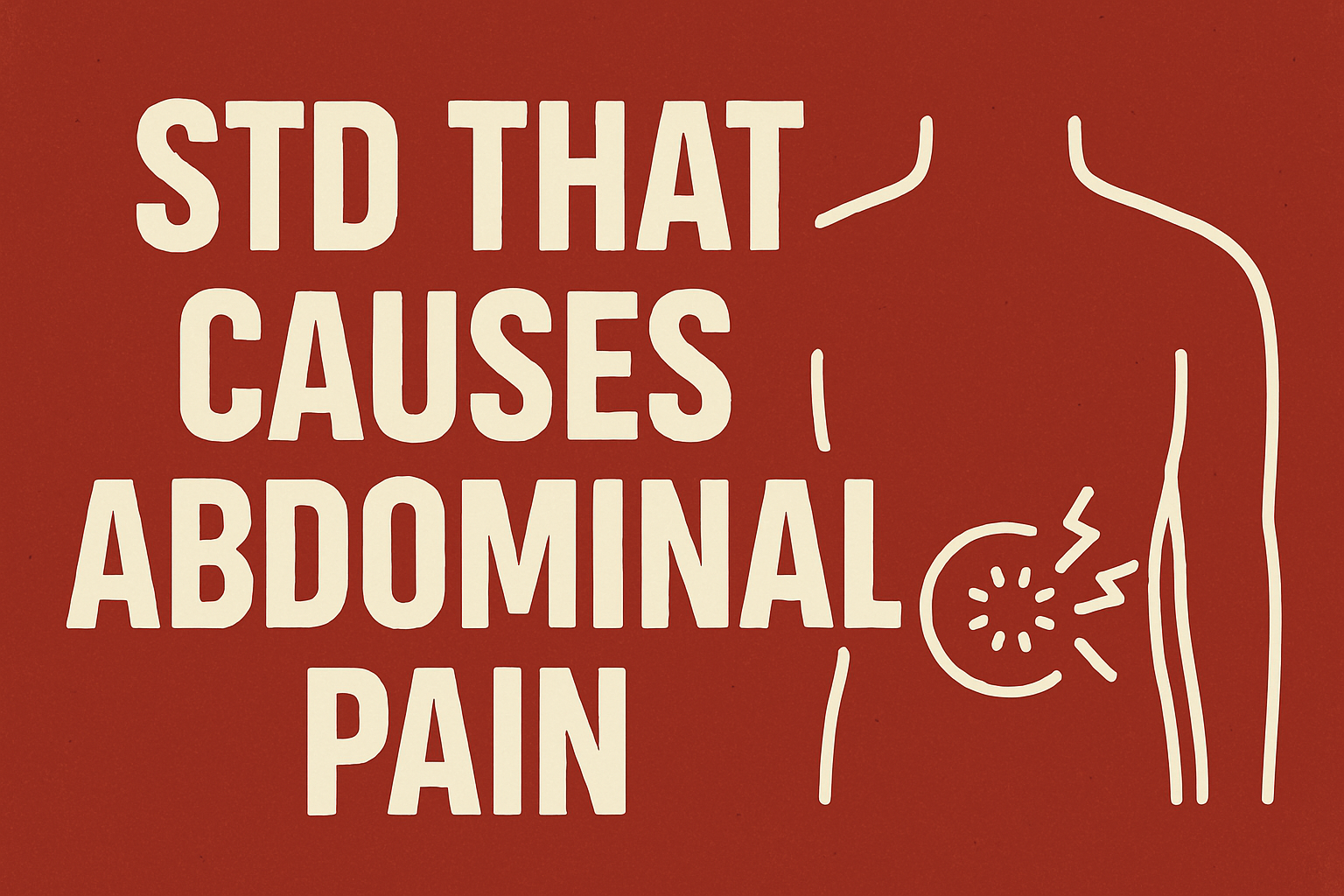Abdominal pain can mean a lot of things—from stomach bugs to food issues or period cramps. But in some cases, it could be a sign of something unexpected: an STD.
Yes, certain sexually transmitted diseases can cause abdominal or pelvic pain—especially when they go untreated. And often, this pain is your body’s way of waving a red flag.
In this article, we’ll break down which STDs can cause abdominal pain, the symptoms to look out for, and when you should see a doctor.
Can an STD Cause Abdominal Pain?
Absolutely. Some STDs affect the reproductive organs, urinary tract, or immune system. When these areas become inflamed or infected, it can lead to cramping, pressure, or pain in the lower belly or pelvis.
In women, the pain is often lower abdominal or pelvic. In men, it may feel like discomfort in the lower belly, groin, or testicles.
STDs That Can Cause Abdominal Pain
1. Chlamydia
- One of the most common STDs
- Often causes no symptoms at first
- When left untreated, it can lead to Pelvic Inflammatory Disease (PID) in women
- Can cause lower abdominal pain, spotting, and painful sex
2. Gonorrhea
- Similar to chlamydia, often goes unnoticed until complications develop
- In women, may lead to PID and abdominal pain
- In men, can cause pain in the lower abdomen, especially if the infection spreads
3. Pelvic Inflammatory Disease (PID)
- Not an STD itself, but a serious complication of untreated chlamydia or gonorrhea
- Causes intense pelvic and lower abdominal pain
- May also include fever, heavy discharge, or pain during sex
4. Trichomoniasis
- A parasitic infection that affects both men and women
- May cause cramping or lower abdominal discomfort in some women
- Other symptoms: foul-smelling discharge, genital itching, or pain during urination
5. Herpes (HSV-2)
- While not a direct cause of abdominal pain, outbreaks may come with flu-like symptoms, including muscle aches, cramps, and pressure in the lower belly
6. HIV (Acute Stage)
- Early HIV infection can trigger symptoms that feel like the flu, including abdominal cramping, nausea, and muscle pain
Other Signs to Watch For
If your abdominal pain is related to an STD, you may also notice:
✔️ Pain during or after sex
✔️ Unusual vaginal or penile discharge
✔️ Pain or burning when peeing
✔️ Irregular bleeding or spotting
✔️ Fever, fatigue, or nausea
When to See a Doctor
You should see a healthcare provider if: ✔️ Abdominal pain doesn’t go away or gets worse
✔️ You notice other symptoms like discharge or fever
✔️ You’ve had unprotected sex or a new partner recently
✔️ You’ve tested positive for an STD in the past
Early diagnosis and treatment are key to preventing complications like infertility or chronic pelvic pain.
How It’s Diagnosed
✔️ Pelvic or abdominal exam
✔️ Urine and swab tests for STDs
✔️ Blood tests for HIV or herpes
✔️ Ultrasound to check for PID or internal inflammation
Treatment Options
✔️ Chlamydia & Gonorrhea: Antibiotics clear most infections quickly
✔️ PID: May require stronger or longer-term antibiotics, sometimes hospital care
✔️ Trichomoniasis: Oral medication like metronidazole or tinidazole
✔️ Herpes: Antiviral meds to manage outbreaks and reduce symptoms
Partners should also be treated to prevent reinfection.
Prevention Tips
✔️ Use condoms or dental dams during all sexual activity
✔️ Get regular STD screenings
✔️ Avoid douching, which can increase infection risk
✔️ Talk openly with partners about sexual health and testing history
Final Thoughts
Abdominal pain can have many causes—but when it shows up alongside burning, discharge, or irregular bleeding, it may point to an STD.
💙 Don’t guess. Get tested. And get the treatment you need before things get worse.
Your body is talking—listen to it.
Related Reads
References
- CDC – Chlamydia: cdc.gov/std/chlamydia
- CDC – Gonorrhea: cdc.gov/std/gonorrhea
- CDC – PID: cdc.gov/std/pid
- CDC – Trichomoniasis: cdc.gov/std/trichomonas
- Mayo Clinic – Herpes: mayoclinic.org

Leave a Reply